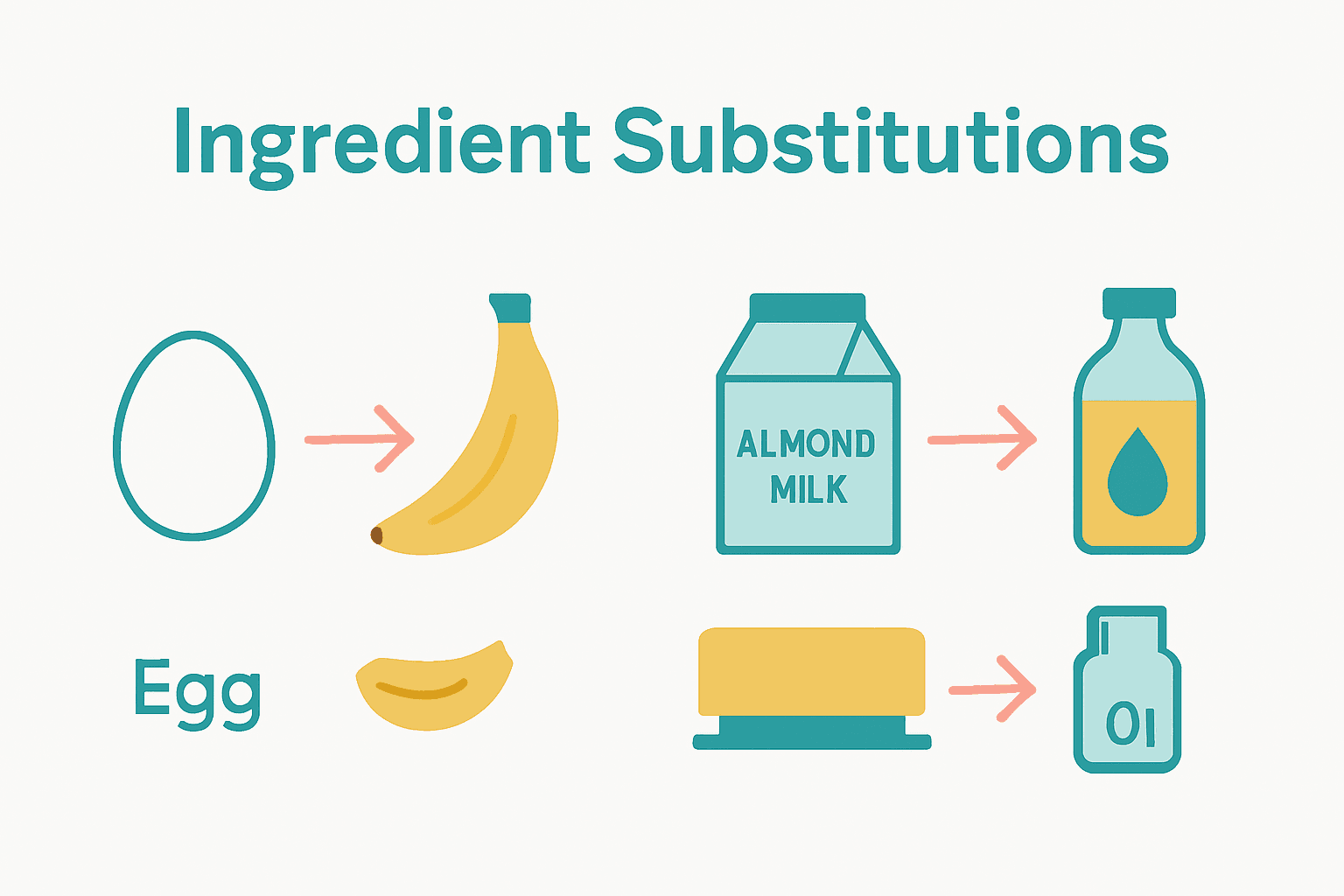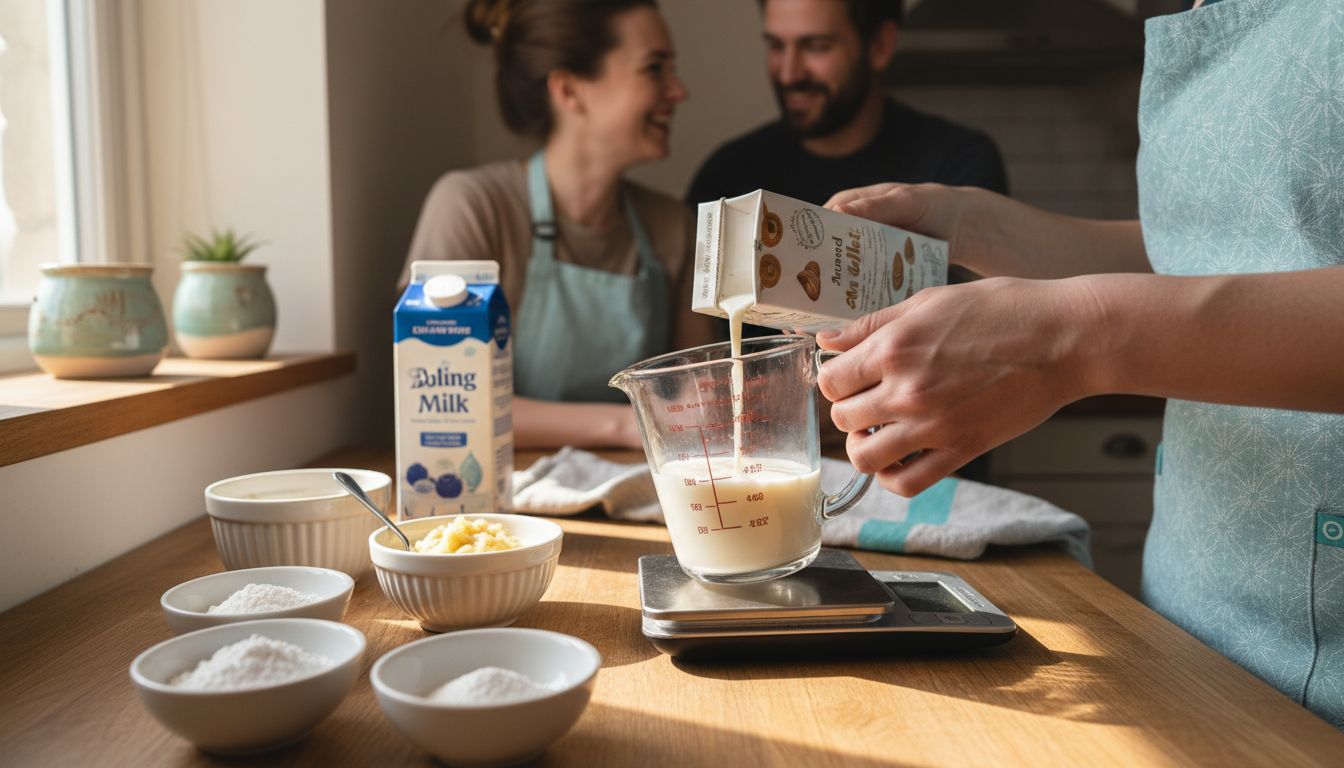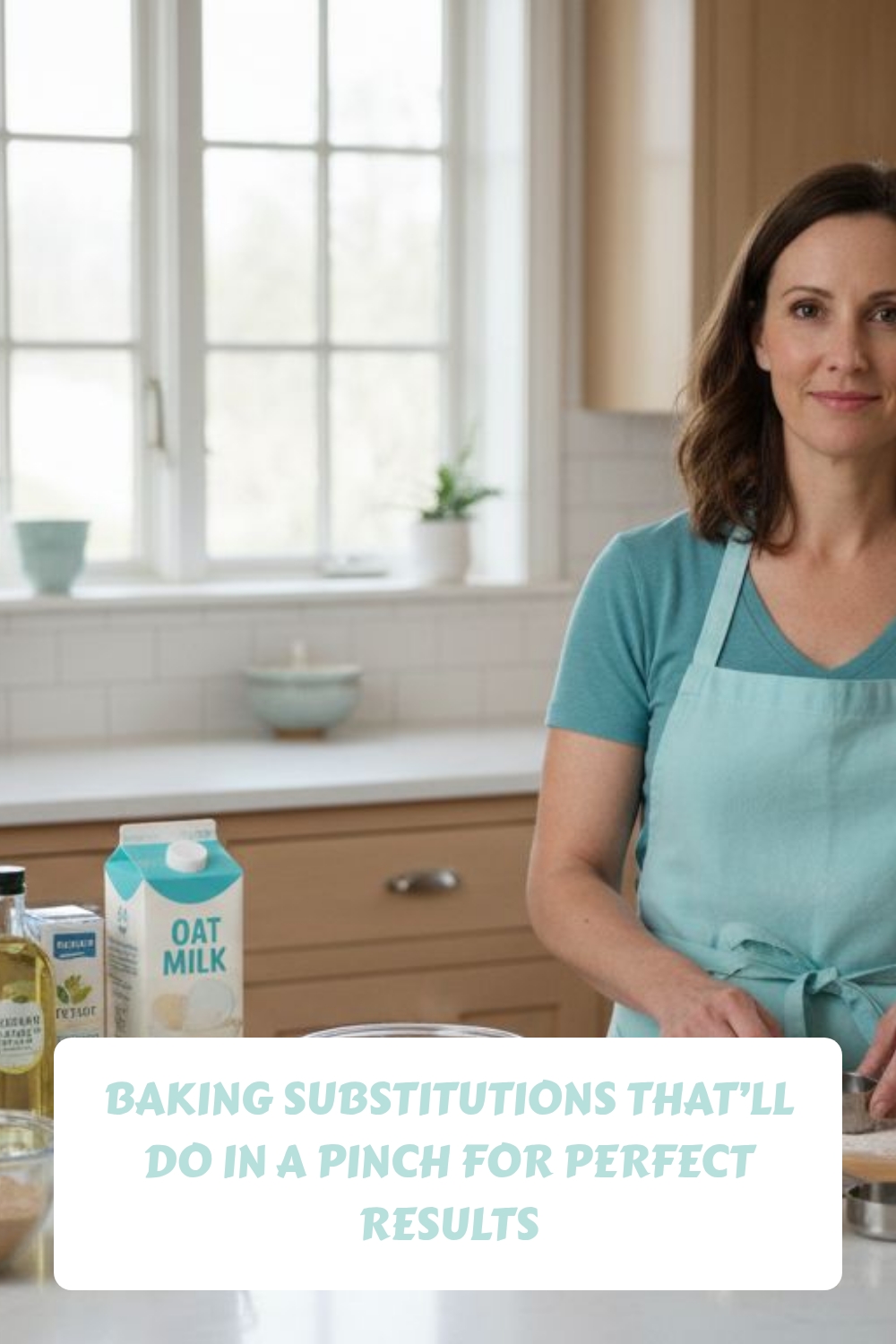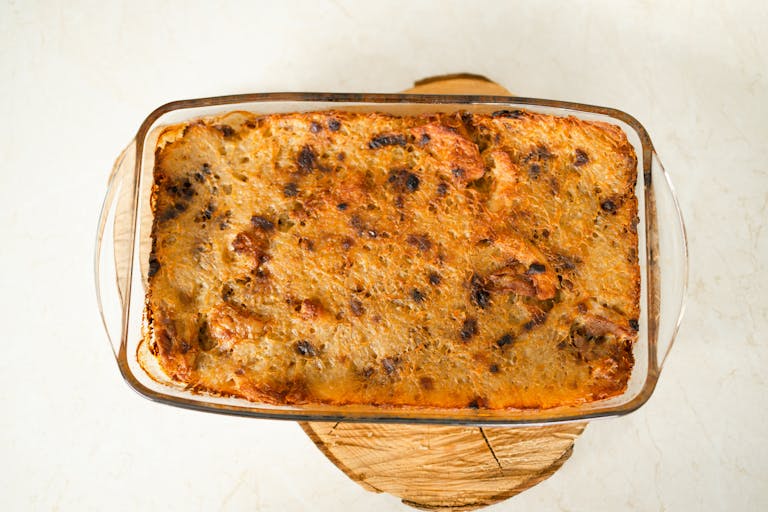Baking Substitutions That’ll Do in a Pinch for Perfect Results
Most home bakers hit a snag when a key ingredient runs out, yet over 40 percent of people regularly need to swap or substitute baking items. Running short on basics can turn a simple recipe into a real puzzle, especially when every ingredient affects texture and taste. Knowing how to assess what you have and choose the right alternatives ensures your treats come out just right. This guide will show you practical ways to tackle substitutions with confidence and avoid kitchen disappointments.
Table of Contents
- Step 1: Assess Your Ingredients and Baking Needs
- Step 2: Identify Suitable Substitutions for Common Ingredients
- Step 3: Mix and Measure Substitutes Accurately
- Step 4: Test the Texture and Taste as You Go
- Step 5: Adjust Baking Time and Temperature if Needed
Quick Summary
| Key Point | Explanation |
|---|---|
| 1. Assess your kitchen inventory first | Evaluate all available ingredients to plan substitutions effectively for your recipe. |
| 2. Use appropriate substitutes for ingredients | Identify replacements that match texture and moisture content; not all substitutions are equal. |
| 3. Measure substitutions with precision | Accurate measurement is essential; ensure volume and weight closely match original ingredients to avoid errors. |
| 4. Monitor texture and taste during baking | Regularly check your batter’s consistency and adjust as needed for the best results. |
| 5. Adjust baking time and temperature accordingly | Be flexible with cooking times and oven temperatures when substituting to achieve ideal baking outcomes. |
Step 1: Assess Your Ingredients and Baking Needs
Before diving into baking substitutions, you first need to take stock of what you actually have in your kitchen. Think of this like a culinary treasure hunt through your pantry and refrigerator. According to Iowa State University Extension, carefully evaluating your available ingredients is the critical first step in successful recipe adaptation.
Start by pulling out everything related to your baking project. Line up your flour types, sugars, dairy products, and other key ingredients. Check expiration dates and look for any alternatives that might work. The University of Illinois Extension recommends creating a quick inventory list to help you visualize potential substitution options. Look for similarities in texture, moisture content, and basic chemical properties when considering replacements.
Pro tip: Take a moment to read through your entire recipe before starting. Sometimes you might discover a potential ingredient shortage early and can plan your substitutions ahead of time. This small step can save you from midrecipe panic and help ensure your baking adventure stays on track.
Step 2: Identify Suitable Substitutions for Common Ingredients
Now that you have an inventory of your baking ingredients, it is time to explore smart substitutions that can save your recipe. According to University of Nebraska Lincoln, understanding basic ingredient replacements can transform a potentially failed baking project into a delicious success.
Start by focusing on key categories of ingredients. For dairy replacements, consider swapping milk with water and powdered milk, or using alternative milk options like almond or oat milk. Eggs can often be replaced with mashed bananas, applesauce, or commercial egg replacers. When it comes to fats, vegetable oil can frequently substitute for butter, and vice versa. Mississippi State University Extension recommends maintaining similar moisture and fat content when making these switches to ensure your baked goods turn out well.
Warning: Not all substitutions are created equal. Some ingredients play crucial chemical roles in baking. Baking powder and baking soda are not interchangeable, and precise measurements matter. Always use a 1:3 ratio when replacing baking soda with baking powder to maintain the right chemical reaction.
 Your next step is to carefully measure and test these substitutions to guarantee a tasty outcome.
Your next step is to carefully measure and test these substitutions to guarantee a tasty outcome.
Step 3: Mix and Measure Substitutes Accurately
Precision is key when working with ingredient substitutions in baking. According to Utah State University Extension, accurate measurement can make the difference between a baking triumph and a kitchen disaster. Your goal is to maintain the same volume and weight as the original recipe calls for when introducing alternative ingredients.

Start by using standard measuring tools like liquid measuring cups for wet ingredients and dry measuring cups for powders and granulated items. When replacing eggs in a recipe, Food Allergy Research & Education suggests using 1/4 cup of applesauce or mashed banana to replace one whole egg. For liquid substitutes like milk, use a 1:1 ratio to ensure consistent moisture content. Remember that weight matters more than volume when making substitutions especially in baking where chemical reactions are precise.
Warning tip: Always measure ingredients at eye level and use the appropriate measuring tool for each ingredient type. Dry ingredients should be leveled off with a straight edge while liquid ingredients require you to check the measurement at the lowest point of the meniscus. These small details can significantly impact your final baking results and help ensure your substitute ingredients perform just as well as the originals.
Step 4: Test the Texture and Taste as You Go
As you experiment with ingredient substitutions, continuous tasting and texture checking become your secret weapon in baking success. Food Allergy Research & Education emphasizes the importance of monitoring your baked goods closely throughout the preparation process to catch any potential issues early.
Start by checking the consistency of your batter or dough before baking. Does it look similar to your original recipe? Feel the texture with a spatula or spoon to ensure it is not too runny or too thick. According to Kansas State University, texture can dramatically change when substituting ingredients, so pay attention to visual and tactile cues. During baking, watch how your substituted ingredients behave. Are they browning differently? Are they rising as expected? Take notes on these observations for future baking adventures.
Pro tip: Always do a small test batch first. This allows you to make adjustments without risking an entire recipe. If something seems off midway, trust your instincts and be ready to make quick corrections. Remember that baking is part science and part art your willingness to experiment and learn will ultimately lead to delicious results.
Step 5: Adjust Baking Time and Temperature if Needed
When you swap ingredients, your baking time and temperature might need some tweaking. National Heart, Lung, and Blood Institute recommends staying flexible and attentive during the baking process, as ingredient substitutions can significantly impact cooking dynamics.
Start by reducing the recommended temperature by about 25 degrees if you are using alternatives that might brown faster or have different moisture content. Watch your baked goods closely during the first batch. Different ingredients can cause faster or slower browning and rising. According to the ERIC educational resource, moisture content and ingredient density play crucial roles in determining how quickly your baked goods will cook. Use a toothpick or cake tester to check for doneness instead of relying solely on the original recipe’s suggested baking time.
Warning tip: Keep a close eye on your first experimental batch. Every minute matters when you are testing new ingredient combinations. Set a timer for a few minutes earlier than the original recipe suggests and check frequently. This approach will help you catch any potential burning or undercooking before it becomes a complete kitchen disaster. Your willingness to adapt and observe is the secret ingredient to successful baking substitutions.
Master Baking Substitutions with Confidence and Ease
Baking substitutions can feel overwhelming when you face missing or limited ingredients. The challenge is clear: you want to bake delicious treats without stress while maintaining perfect texture and taste. This article helped you understand the importance of precise measuring and testing when swapping key ingredients like eggs, dairy, and leavening agents. You also learned how small changes in baking time and temperature can make or break your results.
Now, take control of your kitchen and get inspired to create mouthwatering meals that fit your lifestyle and ingredients on hand. Explore our Quick Meals Archives for easy recipes that work with simple substitutions. Planning to bake for more people or an event Try our Meals for Crowds Archives to find crowd-pleasers with flexible ingredients. Ready to impress guests with your creativity and calm confidence Find organizing tips, recipe ideas, and more guidance that turns kitchen chaos into a joyful experience.
Start experimenting confidently today and transform your baking substitutions into perfect results your family and friends will love.
Baking Substitutions Chart
This chart provides a comprehensive list of common baking substitutions. The information has been compiled and verified from multiple reputable culinary sources to ensure accuracy.
| Ingredient | Amount | Substitution |
| All-Purpose Flour | 1 cup | 1 cup + 2 tbsp cake flour OR ½ cup bread flour and ½ cup cake flour |
| Allspice | 1 tsp | ½ tsp cinnamon and ½ tsp ground cloves OR ¾ tsp ground cinnamon, a pinch of ground cloves and a pinch of grated nutmeg |
| Apple Cider Vinegar | — | Lemon juice, unseasoned rice vinegar or white wine vinegar |
| Baking Powder | 1 tsp | ¼ tsp baking soda + ½ tsp cream of tartar |
| Baking Soda | 1 tsp | 3 tsp baking powder |
| Bread Crumbs | — | Ground rolled oats, crushed cereal, crushed crackers, pretzels, or potato chips |
| Bread Flour | — | All-purpose flour |
| Brown Sugar | 1 cup | 1 scant cup granulated sugar + 1 tbsp molasses |
| Butter | 1 cup | Coconut oil, lard, margarine, Greek yogurt, applesauce, or oil (for baking) |
| Buttermilk | 1 cup | 1 cup plain yogurt (not Greek) OR 1 cup milk + 1 tbsp vinegar or lemon juice |
| Cake Flour | 1 cup | 1 cup all-purpose flour – 2 tbsp + 2 tbsp cornstarch |
| Cornstarch | 1 tbsp | 1½ to 2 tbsp all-purpose flour |
| Cream of Tartar | ¼ tsp | ½ tsp lemon juice |
| Egg | 1 large | 2 tbsp ground flax meal + 3 tbsp cold water (let rest 10 mins) OR 3 tbsp aquafaba OR 3 tbsp vegetable oil + 1 tbsp water OR ¼ cup applesauce, pureed silken tofu, or canned pumpkin |
| Evaporated Milk | 1:1 ratio | Half-and-half |
| Half-and-Half | ½ cup | ¼ cup milk + ¼ cup cream OR ½ cup non-dairy coffee creamer |
| Heavy Cream | 1 cup | Melt ¼ cup unsalted butter + whisk in ¾ cup whole milk or half-and-half |
| Honey | — | Corn syrup, molasses, maple syrup, or agave nectar |
| Lemon Juice | — | Cider vinegar |
| Mascarpone | 16 oz | 12 oz cream cheese + ¼ cup heavy whipping cream + ¼ cup sour cream |
| Powdered Sugar | ½ cup | Grind ½ cup granulated sugar in a blender until fine |
| Semi-Sweet Chocolate | 1 oz | 1 oz unsweetened chocolate + ½ tsp granulated sugar |
| Sour Cream | — | Plain yogurt |
Notes
- When no measurement is specified (shown as “—”), the substitution is a 1:1 replacement.
- Substitutions may alter the taste and texture of the final product. It is recommended to use them in emergency situations.
- Always bake immediately when using baking powder substitutes that contain baking soda and cream of tartar.
References
- Real Simple. (2023, July 28). The Ultimate Guide to Baking Substitutions (Chart and List). https://www.realsimple.com/food-recipes/cooking-tips-techniques/baking/baking-substitutions-chart
- Rattray, D. (2020, April 15). Ingredient Substitutions Chart. The Spruce Eats. https://www.thespruceeats.com/ingredient-substitution-chart-3054056
- Food Network. (2025). Ingredient Substitution Guide. https://www.foodnetwork.com/recipes/ingredient-substitution-guide
Frequently Asked Questions
What are some common baking substitutions I can use if I run out of an ingredient?
To easily substitute baking ingredients, consider common alternatives. For example, you can replace one egg with 1/4 cup of applesauce or mashed bananas, or swap milk with almond or oat milk in equal amounts. Always measure accurately for the best results.
How can I ensure my baking substitutions won’t alter the taste or texture too much?
You can minimize changes by selecting substitutes that closely match the original ingredient’s properties, such as moisture and fat content. For example, if you’re substituting oil for butter, maintain similar quantities to preserve the recipe’s intended texture.
How do I measure substitutions correctly when baking?
Accurate measuring is crucial, especially in baking, where precision matters. Use standard measuring tools for liquids and solids, ensuring to check levels at eye level and level off dry ingredients with a straight edge for accuracy.
What should I watch for when trying new baking substitutions?
Keep an eye on the texture and consistency of the batter or dough as you mix. If it appears too runny or thick, consider adjusting your ingredient ratios before baking to achieve the desired outcome.
How can I determine the right baking time and temperature after making substitutions?
When using different ingredients, it’s advisable to lower the baking temperature by about 25 degrees Fahrenheit. Monitor your baked goods closely, checking for doneness with a toothpick several minutes before the original recipe’s suggested time to prevent undercooking or burning.
Is it helpful to test substitutions with a small batch before committing to the full recipe?
Yes, testing a small batch first allows you to make necessary adjustments without risking the entire recipe. This approach helps you fine-tune your substitutions and ensures better final results before baking larger quantities.
Recommended
- 7 Old Fashioned Dessert Ideas for a Crowd
- No-Chop Recipes Using Pre-Organized Ingredients
- 7 Delicious Dips for Chips to Enhance Your Snacking
- Kitchen Hacks that Cut Cleanup Time in Half







